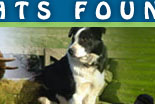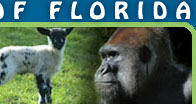



|
Fur Each year, millions of fur-bearing animals - including foxes, raccoons, minks, coyotes, bobcats, lynxes, chinchillas, opossums, beavers, otters, and rabbits - lose their lives to the vanity of humans. On fur ranches they are anally and vaginally electrocuted, gassed, clubbed, killed in decompression chambers, and have their necks broken. In the wild they are killed by drowning, strangling, trapping, stomping, or beating. Consumers need to know that every fur coat, lining, or item of trim represents the intense suffering of 30 to 100 of these once beautiful animals. Their slaughter will end only when the public refuses to buy or wear fur. Learn more facts about fur and help spread the word, for the animals' sake. Leather Despite popular belief, leather is not a mere by-product of factory farming. Rather, it is a booming industry, which generates a significant profit. Every time you choose to buy leather, you sentence an animal to a lifetime of suffering and are directly contributing to factory farming. With the hundreds of cruelty free, comfortable, and fun alternatives there is little justification for continuing to buy products made of the skin of an animal. Wool Within weeks of their birth, lambs are mutilated and castrated, without any anesthetics. To prevent maggot infestation, ranchers restrain live sheep with metal bars, and without any pain relief, slice dinner-plate-sized chunks of flesh from their backsides. During shearing , sheep are violently tied up, and wool is cut with sharp shears at speeds that often result in serious injuries. Many are sheared with mechanical devices that ignore body parts that might be in the way. Following this gruesome process sheep are left unprotected from the elements and many die from exposure. Consumer demand allows this cruel industry to flourish. By making compassionate choices like buying clothing and accessories made from stylish and warm fabric other than wool, you can help to save sheep from this barbaric treatment. |

1431 N. Federal Highway | Fort Lauderdale, FL 33304 | Tel. 954-727-ARFF